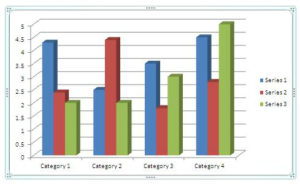Policy Statement on Docket Statistic Reporting
 Chicago Appleseed advocates for research-driven solutions to systemic dysfunction and supports evidence-based reforms in Illinois’ courts, government and communities. Our staff and teams of pro bono professionals rely on meaningful data about Cook County’s courts in order to identify inefficiencies, as well as injustices, and in order to discover reasonable improvements. Adequate data about how cases move through the system is not only necessary to asses which reforms and pilot projects are working, but is also the most effective way of identifying where change is necessary.
Chicago Appleseed advocates for research-driven solutions to systemic dysfunction and supports evidence-based reforms in Illinois’ courts, government and communities. Our staff and teams of pro bono professionals rely on meaningful data about Cook County’s courts in order to identify inefficiencies, as well as injustices, and in order to discover reasonable improvements. Adequate data about how cases move through the system is not only necessary to asses which reforms and pilot projects are working, but is also the most effective way of identifying where change is necessary.
At Chicago Appleseed, we encounter difficulties regularly when attempting to get this minimum of information about the courts. We are unable to get basic data about the numbers of cases moving through Cook County’s courts, much less more specific information about average dates to disposition, or types of dispositions. We are not alone in meeting frustration when seeking simple docket statistics about Cook County courtrooms and we have written about it before.
The tracking of basic docket statistics in court systems is not a new concept. The National Center for State Courts, through its courtstatistics.org project, offers an array of tools for collecting basic information about cases in a state’s trial courts and courts of review. The information is critical for resource allocation and offers meaningful—and largely objective–measures to the public in assessing the functioning of their courts. Even working with the support of Cook County judges and the assistance of their staff, we often cannot get docket statistics because the information is not tracked or because information is kept differently from courtroom to courtroom and cannot be compared. At times, we are told, the information exists but it will not be shared with the public.
We believe that a comprehensive docket statistic system would be beneficial in Illinois because it would allow the courts to better allocate judicial resources and better understand how their courthouses are used. Additionally, the statistics would be useful to advocacy and watchdog organizations. At present, there is no reliable source for individual courtroom or division data in Cook County or Illinois. Transparency and consistency create trust in the judiciary and trust is necessary for a well-functioning judiciary. For instance, although Illinois has statutory time frames for the disposition of cases, it does not monitor compliance, which renders the statutory time frames toothless.
It is time to adopt a docket statistics reporting system in Illinois, and particularly in Cook County, which tracks the number of new, pending, and resolved cases for each courtroom annually. Such dockets statistic reporting systems are common and generally culminate in reports released to the public.
The Administrative Office of the Illinois Courts offers very limited annual reports (the most recent available report is 2012) which gives only the most basic information:
- civil cases filed
- civil cases disposed
- juvenile cases filed
- juvenile cases disposed
- felony cases filed
- felony cases disposed
The information is offered in the aggregate, broken out only by county and not by courtroom or division. It is inadequate to gain a true picture of how the courts function in Illinois.
In contrast, comprehensive docket reporting is typically done quarterly by each courtroom and accounts for the number of:
- open and continuing cases from the prior quarter (typically including number of days the case has been on the docket)
- open and continuing cases transferred from another court room
- new cases assigned to the courtroom
- dispositions (typically broken down by type: verdict, settlement, withdrawn, dismissed)
Best practices for case management in the courts includes detailed information about how cases move through our courts because this information is critical to allocating resources, to identifying bottlenecks, and improving processes. Cook County—and Illinois, generally—should do much better with regard to tracking the cases in its system, especially because the processes for data collection already exist and can be implemented with minimal disruption and cost.
